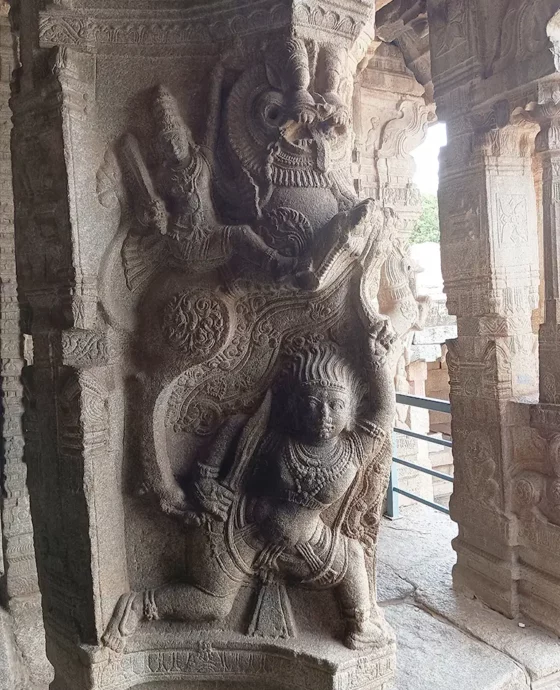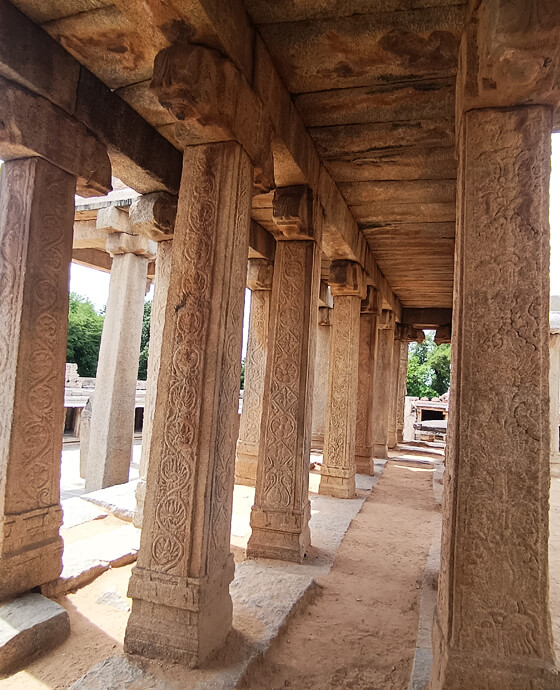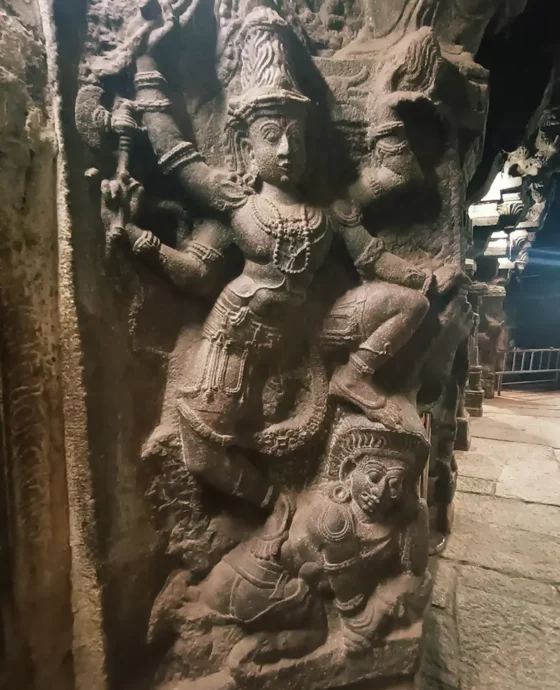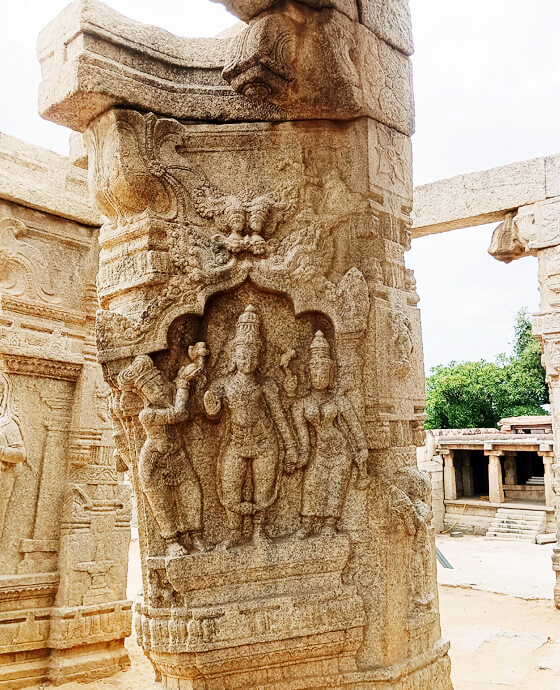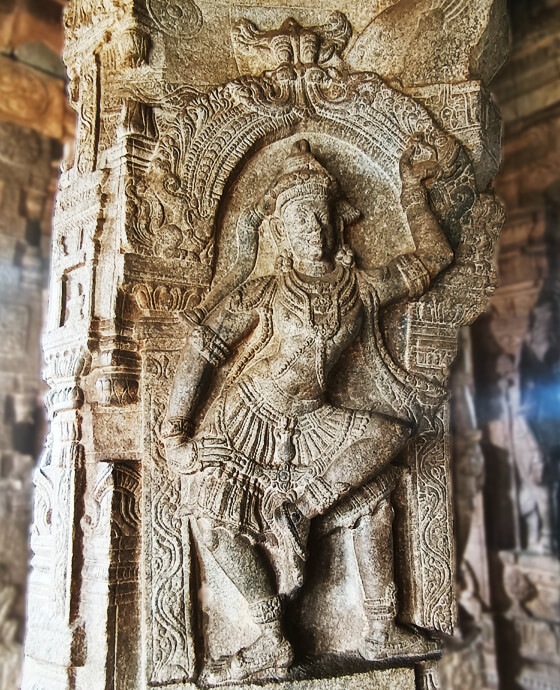Intricate Pillar Carvings
The Lepakshi Temple, located in the southern state of Andhra Pradesh, India, is renowned for its exquisite and intricate stone carvings, particularly on its majestic pillars. These pillars are not just architectural marvels but also serve as a testament to the exceptional craftsmanship and artistic prowess of the ancient artisans. Let’s explore the mesmerizing world of Lepakshi’s carved pillars.
Architectural Splendor: The Lepakshi Temple is a magnificent example of Vijayanagara architecture, and its pillars are at the heart of this grandeur. The temple is believed to have been built in the 16th century, during the Vijayanagara Empire’s reign.
Hanging Pillar Mystery: One of the most famous features of the temple is the hanging pillar. Out of the 70 pillars that support the temple’s main hall, one stands out – a pillar that doesn’t touch the ground entirely. This marvel has intrigued visitors for centuries and remains a testament to the architects’ ingenuity.
Intricate Carvings: The carvings on the pillars depict various mythological stories, scenes from the Ramayana and Mahabharata, and celestial beings. These intricate carvings are finely detailed and showcase the skill and dedication of the artisans.
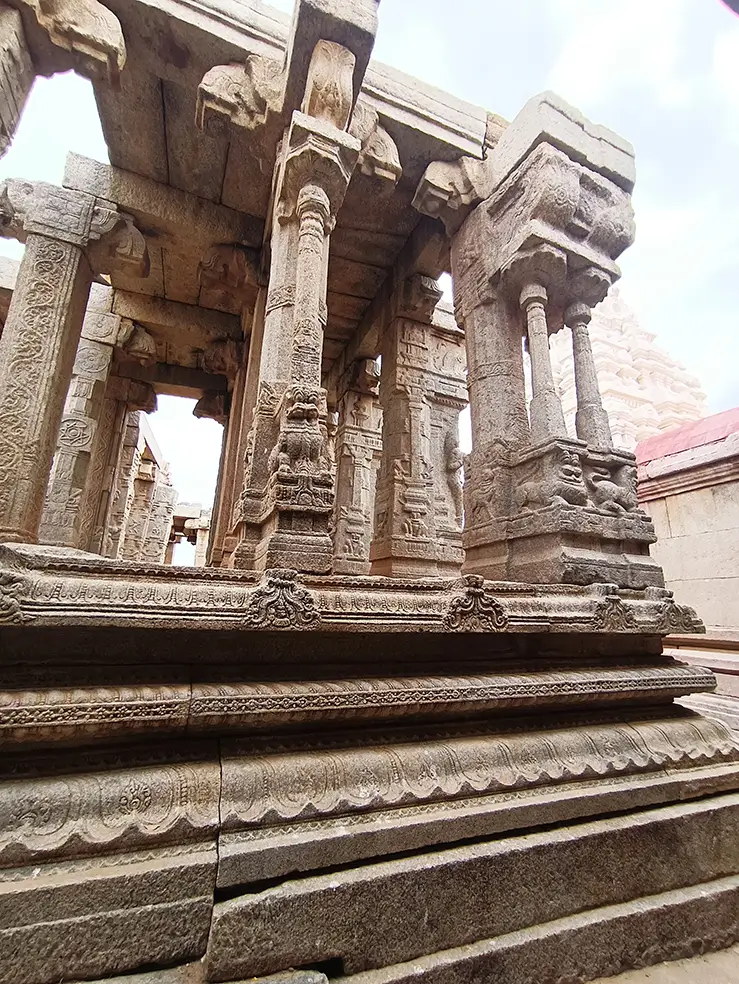
The Dance of Deities
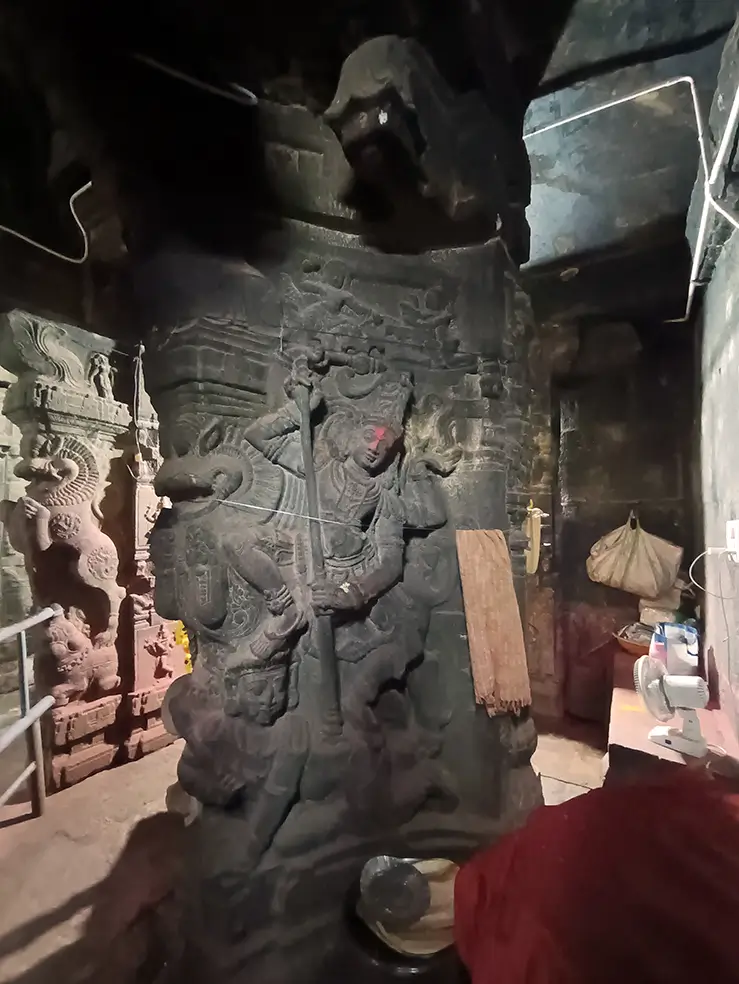
Mythological Depictions: The pillars narrate tales from Hindu mythology. The epic story of the Ramayana is vividly portrayed, with scenes like Lord Rama breaking Lord Shiva’s bow and the demoness Surpanakha approaching Lord Rama.
Diverse Styles: The Lepakshi Temple boasts various architectural styles, and the pillars reflect this diversity. From the ornate pillars of the Natya Mandapa to the majestic ones in the Mukha Mandapa, each pillar exhibits unique motifs and carvings.
Gods and Goddesses: The temple’s pillars pay homage to a plethora of gods and goddesses. You’ll find intricate carvings of Lord Shiva, Lord Vishnu, Lord Brahma, Goddess Lakshmi, and many other deities.
Yali Pillars: Yali, a mythical creature with the body of a lion and the head of an elephant, is a recurring motif in the temple’s carvings. These Yali pillars showcase incredible craftsmanship.
Musical Pillars: The temple is renowned for its musical pillars that emit different musical notes when struck. These pillars are often referred to as the “Saregama Pillars” and are a true marvel of acoustical engineering.
Floral Motifs: Amidst the divine depictions, one can also find intricate floral motifs and patterns on the pillars, showcasing the artisans’ attention to detail and their ability to transform stone into delicate designs.
Sculptures of Lepakshi Temple

The Dance of Deities:
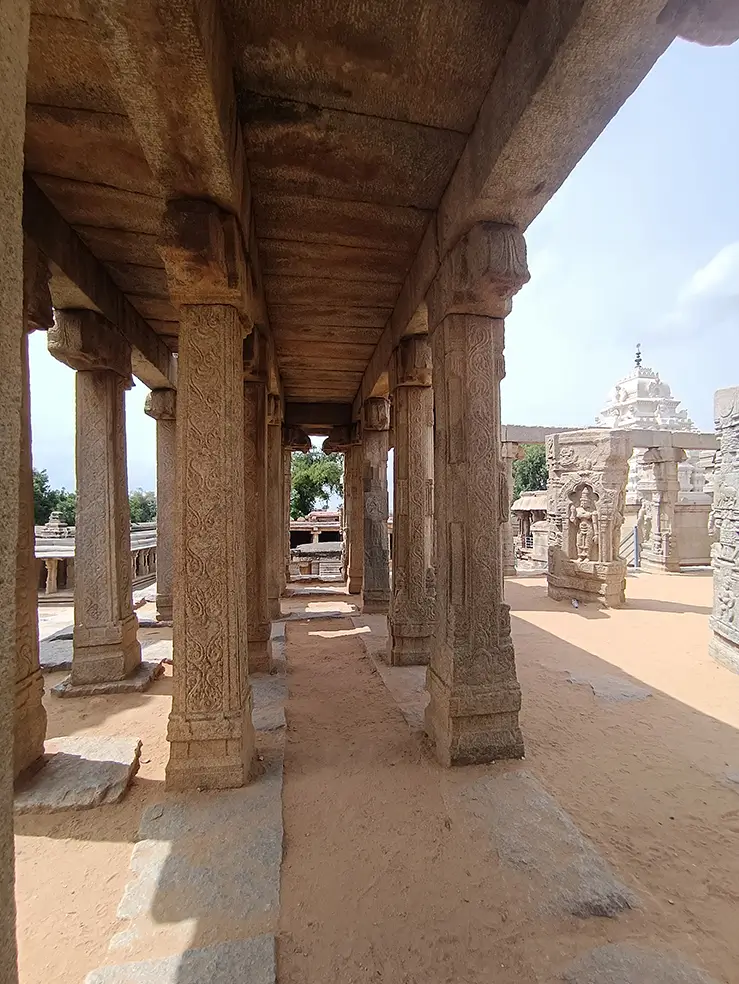
As the sun gracefully descends, casting a warm and enchanting glow over the main hall of the Veerabhadra temple, a truly magical spectacle unfolds. In this ethereal light, each of the seventy stone pillars adorning the hall emanates a resplendent, almost ‘golden’ radiance, adding to the temple’s mystique and grandeur.
Among these remarkable pillars, one stands out as a marvel of architecture and engineering – the famous ‘hanging pillar.’ It is said that this pillar barely touches the temple floor, leaving a minute gap that creates the illusion of it hanging in mid-air. To demonstrate this extraordinary feat, one can even pass thin objects such as a sheet of paper or a piece of cloth through the gap between the pillar and the ground.
Near the Kalyana Mantapa lies the Lata Mantapa, also known as the Hall of Creepers. This section features around 30 meticulously carved pillars, each adorned with distinct patterns portraying various flowering creepers and climbers. These pillars are a true work of art, with intricate motifs of flowers and birds that have inspired the famous sari border designs of Lepakshi. A multitude of these exquisite designs can be found adorning several pillars throughout the temple.
As you approach the Ardha Mantapa, you are welcomed by sculptures of Dwarapalakas guarding the entrance. The ceiling of this section is a canvas of divine frescoes, depicting the 14 incarnations of Lord Shiva. The most prominent among them is the colossal 24 x 14 feet fresco of Lord Veerabhadra, making it the largest single fresco in India.
The Ranga Mantapa, also known as the Natya Mantapa or Dance Hall, is undoubtedly the temple’s pièce de résistance. It is renowned for its 70 intricately carved pillars, with the star attraction being the Akasha Stambha, or more commonly known as the Hanging Pillar. The pillars and sculptures in this hall reveal the exceptional skill of the temple architects during the Vijayanagara era. Each pillar tells a unique story through life-like sculptures of deities playing musical instruments and dancing. Witness Lord Shiva in his celestial Ananda Tandava, Brahma enchanting with his drum, Narada engrossed in the tamburi’s melodies, and heavenly apsaras gracefully dancing to divine rhythms. The ceiling of this hall is adorned with captivating mural paintings, narrating scenes from the Ramayana, Mahabharata, and various puranas.
Flanking the entrance to the sanctum are majestic sculptures of the goddesses Ganga and Yamuna, creating an aura of divinity. Inside the sanctum, a near life-size idol of Veerabhadra, adorned with skulls and fully armed, reigns as the presiding deity. A unique feature within the sanctum is a cave chamber where the revered sage Agasthya is said to have resided while installing the Linga. Above the deity, the ceiling bears paintings of the temple’s builders, Virupanna and Viranna, depicted regally and adorned with ornate headgear, offering sacred ashes to their family deity.
The Veerabhadra temple at Lepakshi is not just a testament to the architectural brilliance of its time but also a living canvas of art, history, and spirituality. Each pillar and carving is a brushstroke in a masterpiece that continues to mesmerize visitors with its timeless beauty and profound cultural significance.
The sculptures of Lepakshi Temple are not merely stone figures; they are a testament to the craftsmanship, spirituality, and cultural richness of an era long gone. As you wander through the temple’s hallowed halls, take a moment to appreciate these masterpieces in stone, for they are not just relics of the past but a living legacy of India’s artistic and spiritual heritage. Visit Lepakshi Temple to witness the dance of deities, the tales of epic heroes, and the enduring beauty of sculpted artistry.
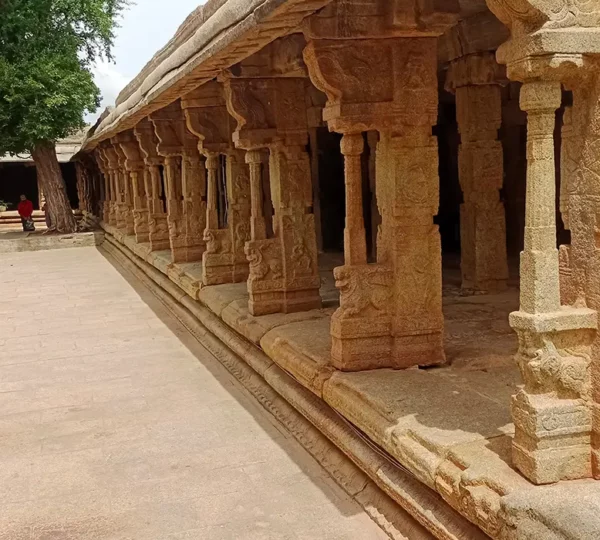
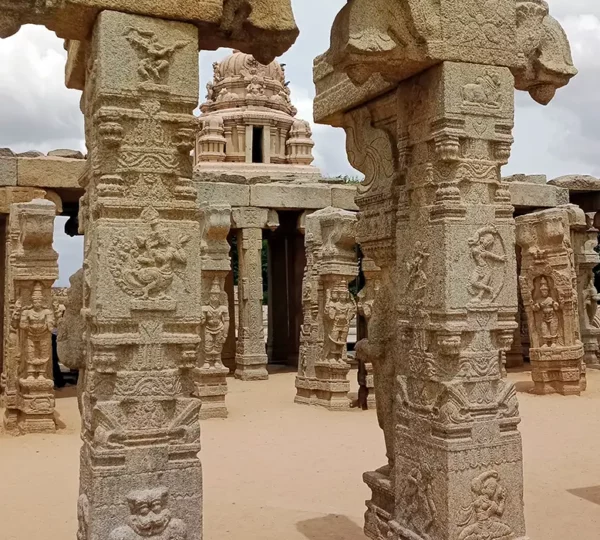
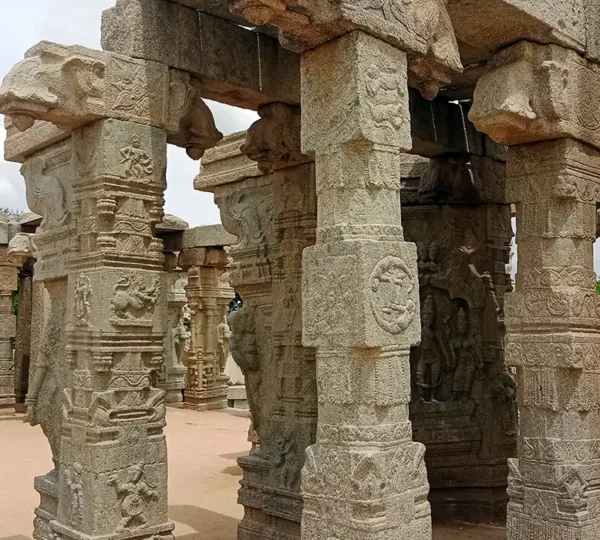
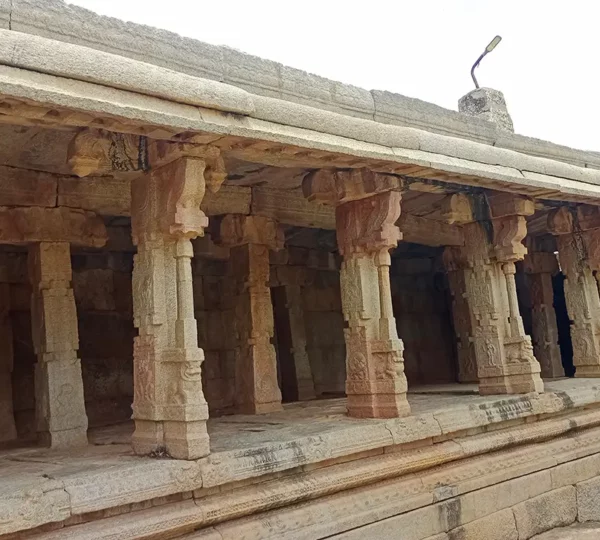
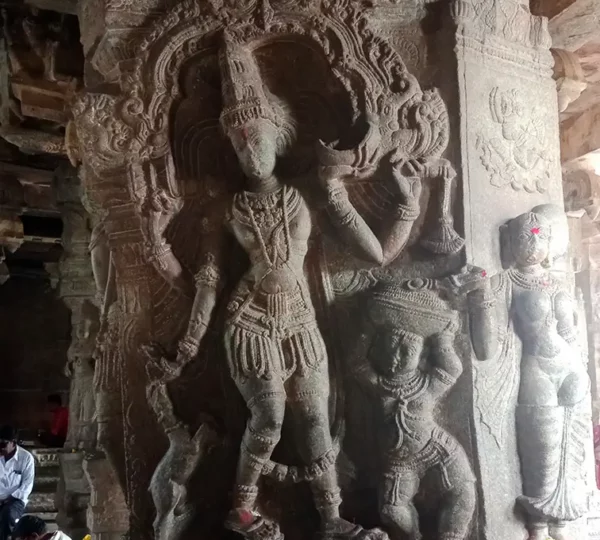
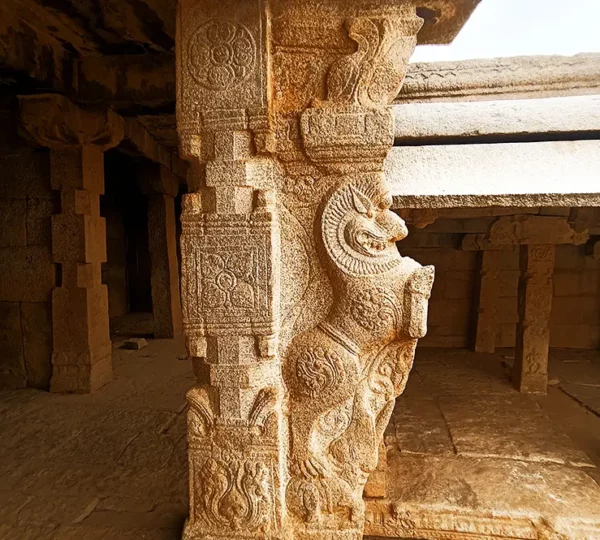
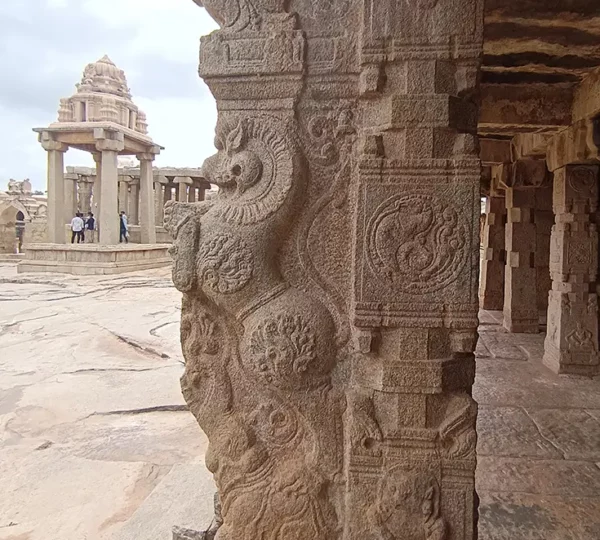
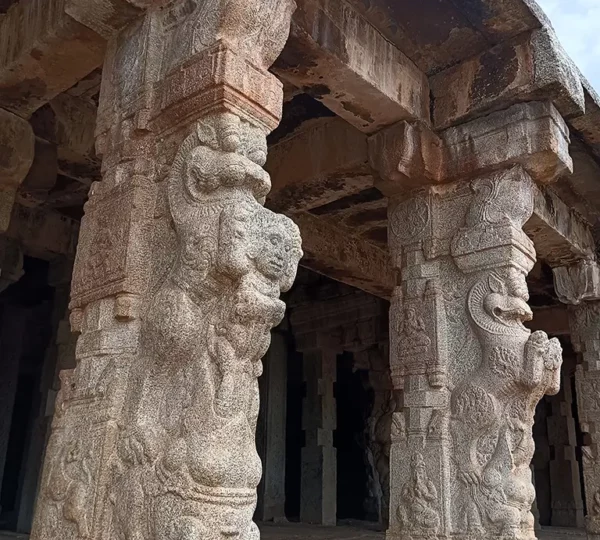
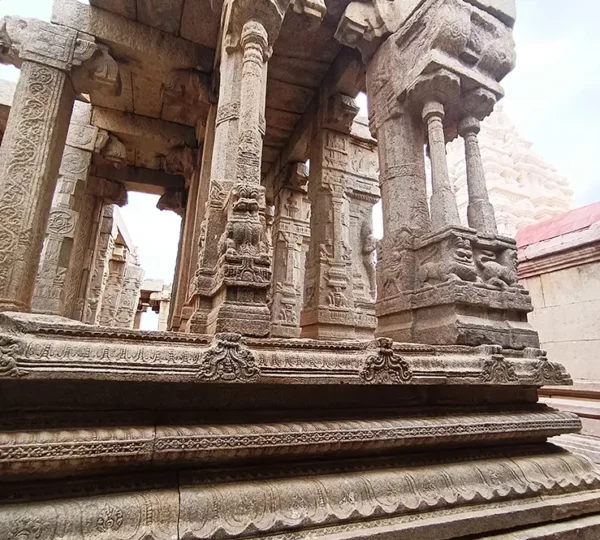
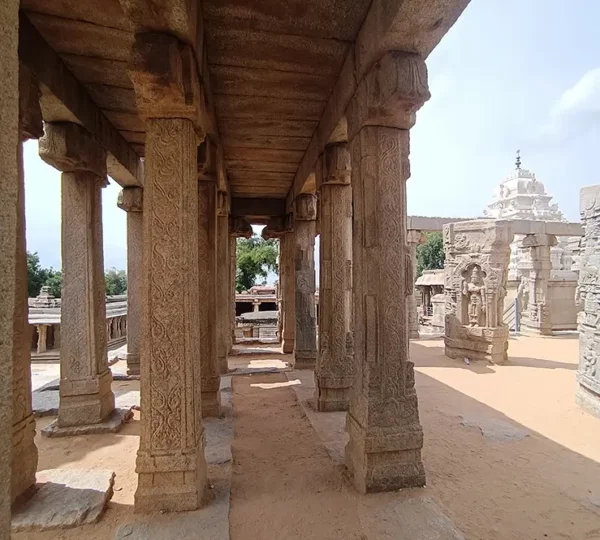
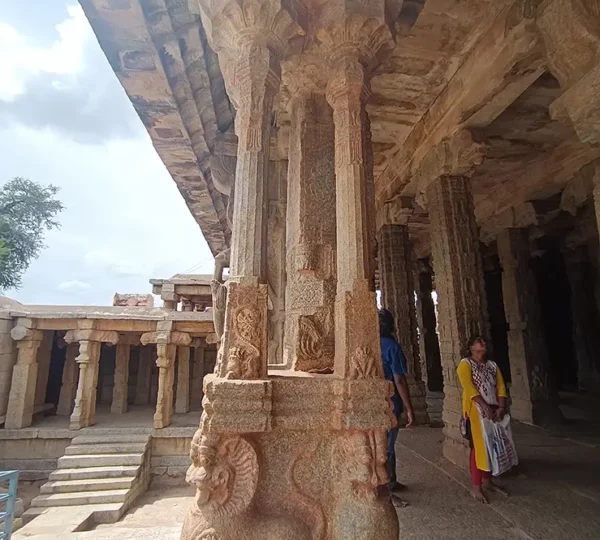
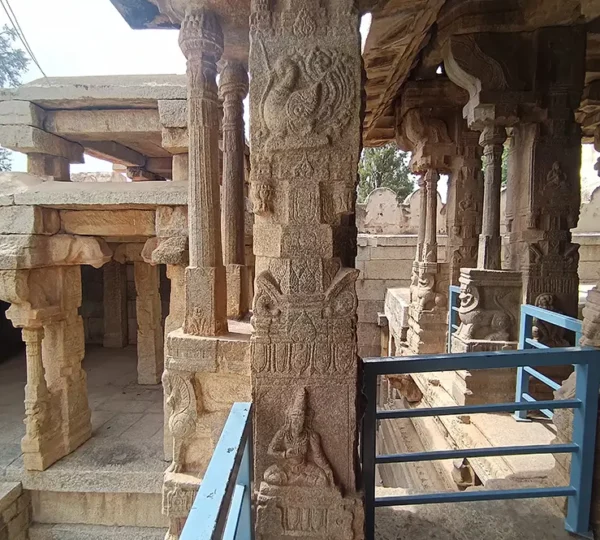
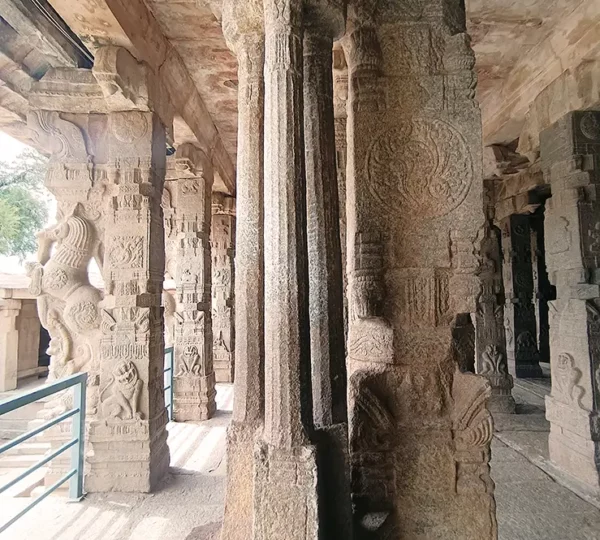
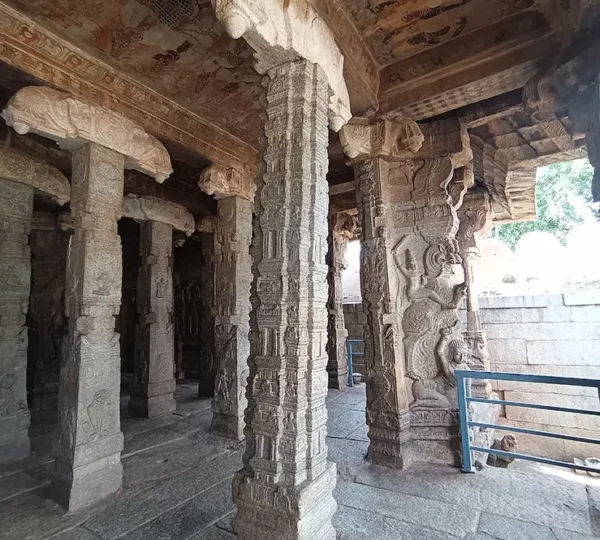
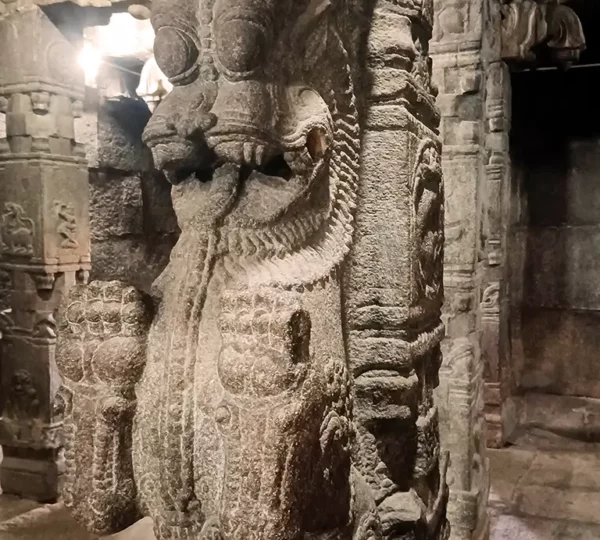
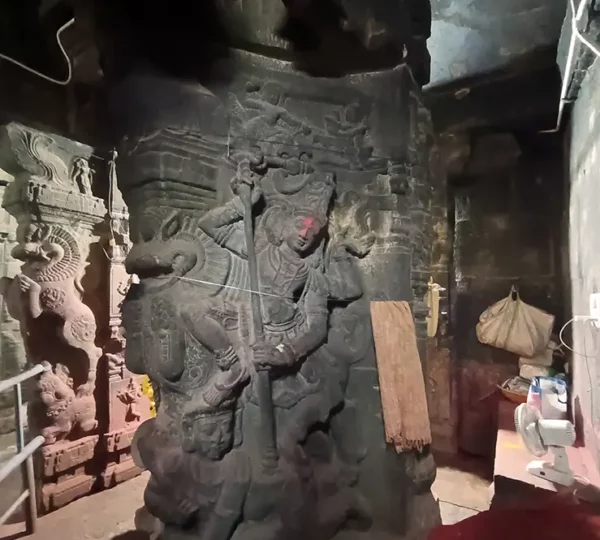
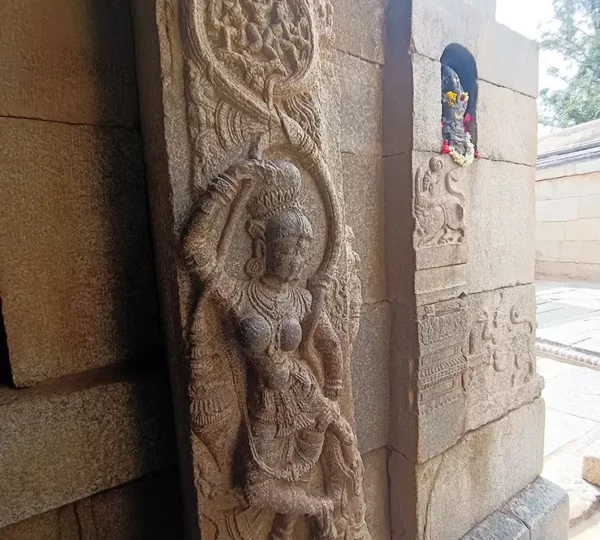
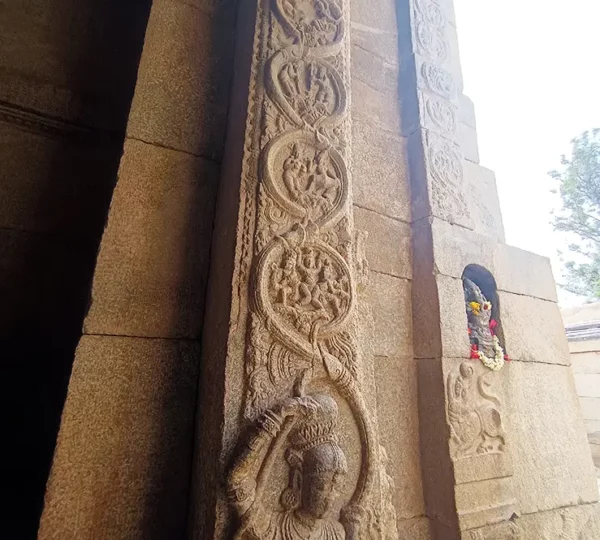
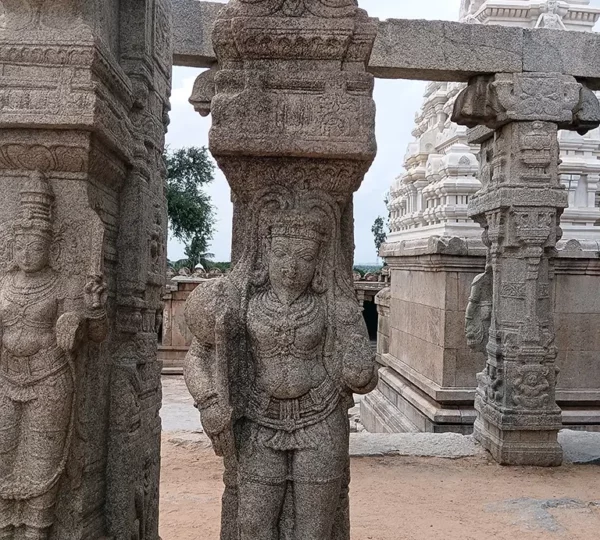
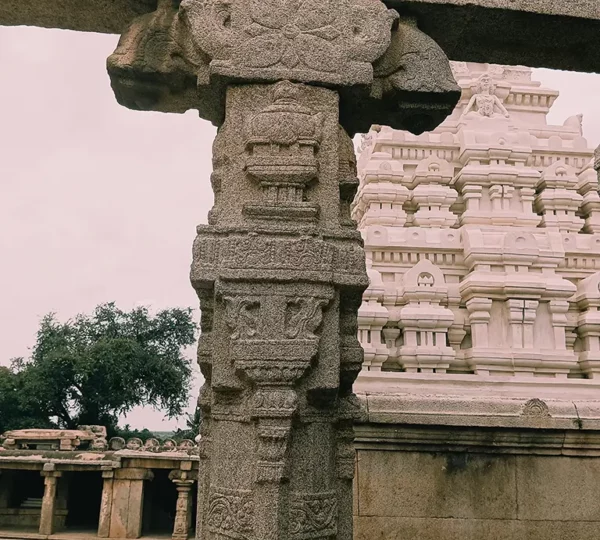
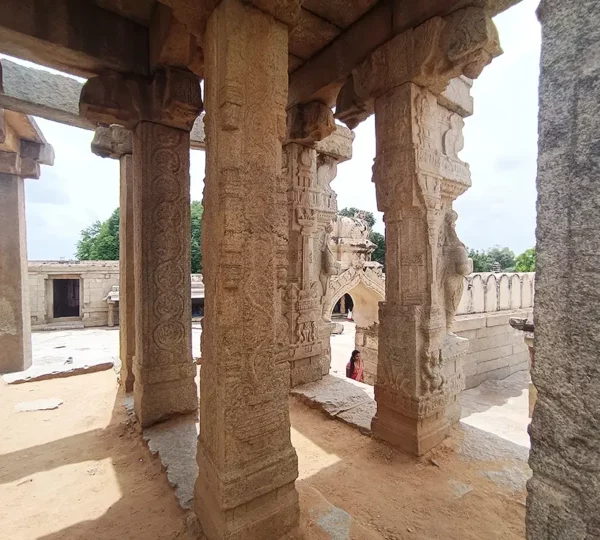
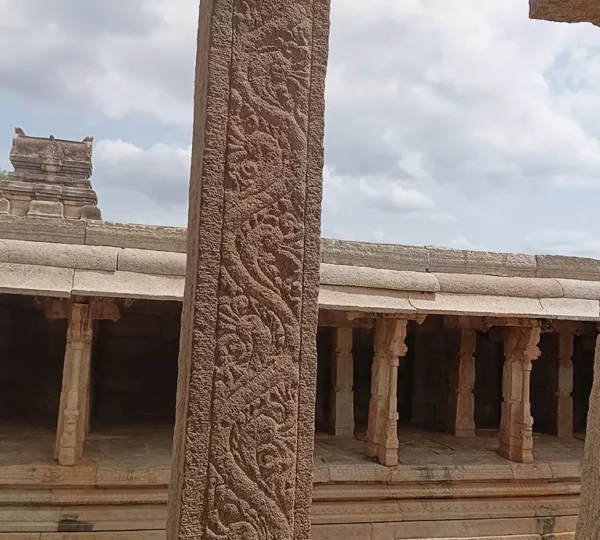
Mythological Tales on Every Pillar
The temple’s interior boasts intricately carved pillars that bear witness to the remarkable craftsmanship of the artisans of their time. These pillars, adorned with mythological motifs, stand as architectural masterpieces.
The temple’s monolithic wonders, such as the colossal Nandi statue and the enigmatic Lepakshi Footprint, capture the imagination with their sheer size and craftsmanship. These single-rock creations add a mystical dimension to the temple complex.
Lepakshi Temple is adorned with exquisite frescoes and paintings that narrate Indian mythological tales and historical epics. These well-preserved artworks offer a visual journey into the rich cultural tapestry of ancient India.


